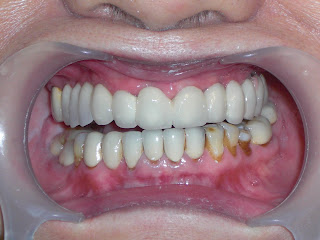GRANMA'S GOT NEW FANGIIIS!

Hiyaaa Folks! Lost alllmuz all me sky tiith . Me ground tiith there but cannaa grind! Kuz me tiith done rotted under me bridges. Nein soorry fer me. Kleverrr dentiist done plazed new uns! Dem olde iinplants dey call dem. Sum big .....sum smallllll...... miniiiis. ..what! AAAAARGH...... dem miniisss wurrkks ai teilll ya. Ya gimme yer fingerrr and triiee......likes what me munching now! C dem baack beig an frunt ar miniis what!


